Over my past decade of training, I’ve learned a ton and followed a lot of strength coaches to get stronger.
In my pursuit of greater strength gains, I’ve trained over 100 athletes in the art of strength training.
Most of these tips are basic in nature, but every single one of them can help you gain strength for the rest of your life. If it’s on this list I promise you it’s important.
The next time you need some tips to break through your plateau, this is the resource you’re going to want to get to the other side.
On This Page
- #1 Barbell Is KING!
- #2 Progressive Overload Is Key
- #3 Eat!
- #4 Master Your Technique
- #5 Strength-Building Supplements & Electrolytes
- #6 Proper Warmup
- #7 Train Weak Points
- #8 Incorporate Strongman Training
- #9 Train Like A Bodybuilder
- #10 Specificity Is Important
- #11 Use A Lower Rep Range For Faster Strength Gains
- #12 Don’t Forget Sub-Maximal Training
- #13 Get A Training Partner
- #14 Improve Your Grip Strength
- #15 Abdominal Pressure For Maximal Strength & Stability
- #16 Use Dynamic Jumps & Throws In Your Training Program
- #17 Use Leg Drive When Benching
- #18 Wear A Belt On Heavy Sets
- #19 Rest Longer In Between Sets
- #20 Wear Correct Footwear
- #21 Use Chalk On Heavier Sets
- #22 When Pressing, Keep Your Wrists & Forearms Straight
- #23 Incorporate Over-Warmups
- #24 Ditch Pyramid Training
- #25 Try Out Unilateral Exercises
- Conclusion
#1 Barbell Is KING!

I’ve gone over this many times, to get stronger forever, focusing on barbell movements is the #1 thing you can possibly do.
When your goal is building muscle and getting stronger, the best movements are those that allow you to lift the most weight.
If you aren’t getting stronger at the big 4 (Squat, Bench, Deadlift, Overhead Press) and their close variations are you really getting stronger? It’s hard to say I think!
When in doubt, focus the majority of your resistance training on free weights. I guarantee you’ll get better strength gains than those that do a bunch of isolation exercises.
The Barbell IS KING!
#2 Progressive Overload Is Key

If you’re in the gym every week, using the same weights without increasing them, you will not get stronger. This is the main law of gaining strength, you need to add more weight over time.
The best way I’ve found to incorporate proper progressive overload in training is to only increase the weight by 5-10 pounds at a time.
If you increase the weight too quickly, expect to stall just as quickly. The more time you give yourself to get stronger the better off you are.
When in doubt, start too light and progress slowly!
Also, it’s worth mentioning that you need to use the same exercises week after week until you hit a plateau.
If you switch it up to “confuse the muscle” you’re never going to get stronger.
Use the same exercises, break personal records, and only switch them out when you hit that peak.
#3 Eat!

This is such a basic thing that so many people have wrong. When training to get stronger, what do you think gives you the energy and building blocks to do so?
It’s not supplements or fit teas, it’s FOOD!
If you’re constantly under-eating, you’re going to have a very hard time building muscle mass and strength. You don’t need to overeat, however! Eating at your maintenance calories or an extra 200-500 calories is all you need.
If you want to get stronger but aren’t willing to eat, it will never happen I promise. I had a client that weighed 135 lbs when we first started, over the course of two years he didn’t get any stronger, and he weighed 140 lbs at the end.
I threw every single training trick I had at him, but he just refused to eat to make the magic happen. Mind you, he was 14-16 when I was training him. Getting a teenager that is naturally skinny to eat enough is pretty much impossible.
You have to want it enough, if you do, you’ll find a way to eat and get stronger!
#4 Master Your Technique
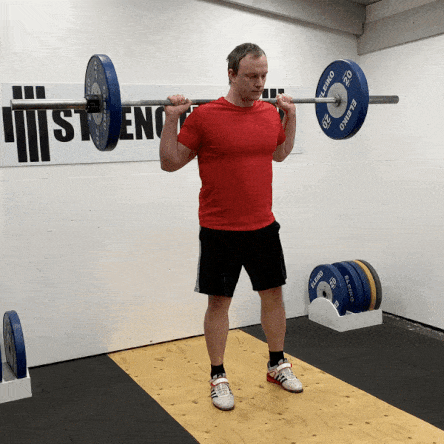
When building strength, you need to master your technique. Many people don’t know this, but strength is actually a skill! The better your skill, the stronger you’ll be!
Mastering your technique is easier said than done, it takes many years and thousands of reps to become technically efficient. If you want to master your form and become the strongest version of yourself I recommend Starting Strength by Mark Rippetoe.
Not only is Mark one of the greatest coaches on Earth, but he also has the best book on strength and technique I’ve ever seen. He goes over every little detail you could possibly need.
If your form needs to be tweaked, Starting Strength is what I recommend. I promise it’s worth every penny!
#5 Strength-Building Supplements & Electrolytes
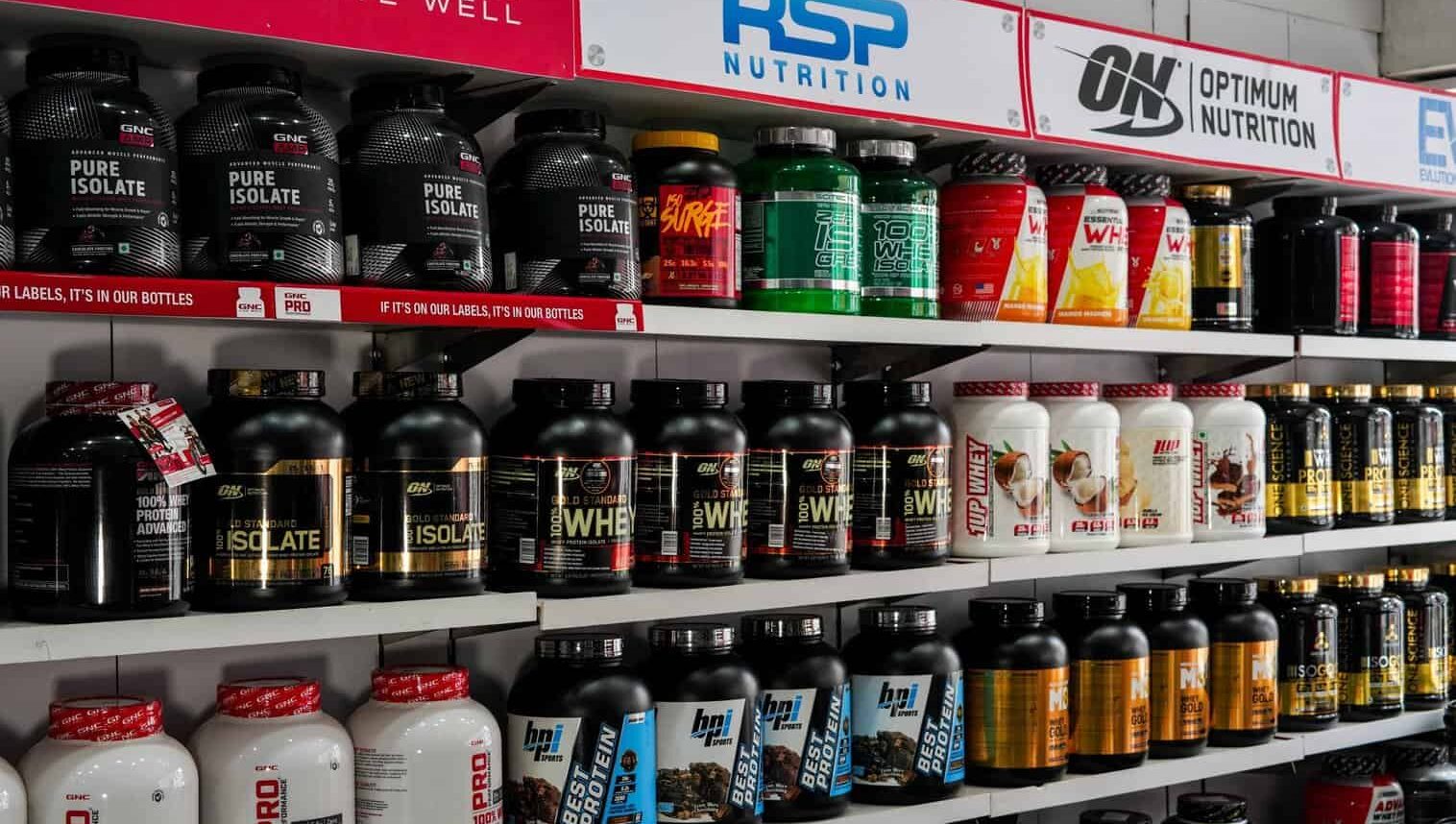
I rarely ever recommend supplements because I believe food is the #1 thing you can consume to gain strength.
However, there are a couple of supplements I would recommend for anybody regardless of your goal.
- Whey Protein. Everybody has heard about the benefits of whey protein, so I won’t go over them here. Using it before, during, and after workouts is a great idea I definitely recommend. 25-50 grams twice a day is usually enough for most people to hit their protein intake easily. The #1 brand I recommend is Optimum Nutrition, Amazon has an amazing stock of flavors. I personally like Chocolate and Vanilla Ice Cream the best!
- Creatine. This is one of the most researched supplements of all time! The benefits are endless; it raises anabolic hormones, reduces protein breakdown, and most famously, boosts the workload you’re able to accomplish! Put simply, it allows you to do more work and build muscle. Plus Creatine is incredibly cheap for the effects it gives! Try it out and see how it helps your performance in the gym!
- Vitamin D. This vitamin, which is actually a hormone produced by the kidneys, has been found to potentially improve muscle function. Those with higher lean body mess were found to have higher levels of vitamin D in the body. Make sure you don’t just start taking supplements for it though, go get a blood test to see what your vitamin D levels are. This will help you determine how much you need to start, the highest I’ve used for myself is 10,000 IU. The exact brand I used to optimize my vitamin D levels can be found here on Amazon. It’s relatively inexpensive, and I could feel a remarkable difference!
- Electrolytes. Seriously, I can’t talk about the benefits of electrolytes enough. Most people think they just need to pound a bunch of water to stay hydrated when in reality, it’s going to dehydrate you doing that. The reason for that is simple, you drink a ton of water without replenishing electrolytes, and they whoosh out of your body just like that! So make sure you’re consuming enough sodium in the form of sea salt as well as magnesium and potassium through different food sources. You can also invest in some electrolyte replacement supplements as they’re easy to consume in water.
- Testosterone. No, I don’t recommend taking steroids to get stronger. I’m recommending you go out, get a blood test, and see if you have low testosterone. It’s one of those things you won’t know until you get it tested. If you have low T, your doctor can get you on Testosterone Replacement Therapy to optimize your hormone levels. If you go to this website called PrivateMDLabs, you can order blood tests to take to your doctor. Order the test called “Hormone Panel for Females”, Men and Women can get this test done so ignore the name they put on it. Having low T has a ton of negative health effects other than just being weak so take it seriously!
Also, if you’re curious if you need something like protein powder to build muscle, this article covers that.
#6 Proper Warmup

When it comes to warming up properly, make sure to keep it general at first and make it more specific as you go. The main thing I have my clients do is basic movement patterns that warm up the entire body!
- Upper Body Dynamic Warm-up
- Band Pull Aparts 10-20 Reps
- Band Dislocates 10-20 Reps
- Explosive Movements To Jump Start Your Central Nervous System
- Medicine Ball Toss 10-20 Throws
- Box or Broad Jumps 10-20 Jumps
- General Upper Body And Lower Body Movements
- Pushups/Dips 10-20 Reps
- Pullups/Inverted Rows 10-20 Reps
- Bodyweight Squat/Lunges 10-20 Reps
- Main Barbell Movement (% of Working Sets)
- 50%x10, 60%x5, 70%x5, 80%x3
As you can see, we start with a general warm-up for the upper body. Then we move on to explosive movements to prime the central nervous system to work. From here, we use basic bodyweight exercises to warm up the entire body.
Finally, we start with 50% of our work set on the bar and increase the weight by 10% jumps until we get to our working sets. This is a basic warm-up anybody can do but find one that works for you!
#7 Train Weak Points

Everybody has weak points in their body that need to be addressed. Locating these areas can be difficult, but I’ve found an easy way to determine this.
First, you have to find where you’re having a hard time with your main barbell movements. Imagine every time you bench heavy weights, it always feels difficult just at lockout. This might tell you that your triceps are weak and need to be strengthened accordingly.
Bottom line: find your weak points and turn them into strengths.
#8 Incorporate Strongman Training
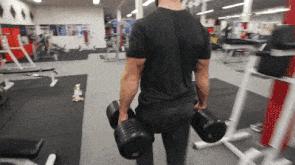
Strongman training is one of the #1 ways to build overall body strength and conditioning. Look at World Strongest Man competitors like Brian Shaw and Hafþór Björnsson, they’re massive and have superhuman feats of strength.
Regardless of how you train, incorporating strongman training into your program will push your strength and conditioning to new heights! The main implements I recommend that anybody can do are Weighted Sleds, and Farmer Carries.
Sure you need a special sled such as this one, but most gyms these days are starting to get a clue and investing in better cardio equipment. Pushing a weighted sled will help you get in shape and gain strength if you use it correctly.
As for Farmer Carries, I recommend using a Trap Bar over Dumbbells. You can use a special implement as they do in Strongman competitions, but they aren’t very beginner-friendly. Investing in a solid Trap Bar also allows you to do Trap Bar Deadlifts which is one of my favorite Deadlift variations by far!
#9 Train Like A Bodybuilder

When I say train like a Bodybuilder, I don’t mean 6 times a week using a million exercises per body part. I mean having muscular symmetry.
If you train your chest, train your back. Biceps, triceps. Quads, hamstrings. You get the picture!
Training like a bodybuilder means staying balanced from head to toe. Maintain this balance and you will get stronger. Having weak points in a chain is not a good thing whatsoever!
#10 Specificity Is Important
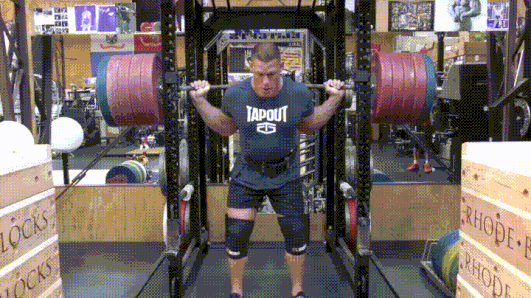
When the goal is getting stronger at the basic barbell lifts, doing a bunch of isolation movements isn’t the best plan of attack. If you want to get stronger at those movements, you have to do those movements.
There was an article I read a long time ago that basically stated you can get stronger at the Squat and Deadlift by not Squatting and Deadlifting. And while this may be true, losing the technical aspect of a major barbell movement will not help you get stronger at it.
That’s why I recommend to always keep at a minimum, one variation for each of the big 4. You don’t have to do Conventional Deadlifts all the time, but doing a Deadlift variation every week will help you “grease the groove” so to speak.
Don’t just do a bunch of isolation exercises for a couple of months and wonder why you’re weaker at what really matters – Squats, Deadlifts, Bench Presses, and Overhead Presses!
#11 Use A Lower Rep Range For Faster Strength Gains
If you want to get stronger and faster, train your barbell lifts in the 3-6 rep range. Lifting heavy weights in this rep range allows you to activate more motor units and increase your neuromuscular strength faster.
This is why you see some people that don’t have huge muscles lifting massive weights for their size! They have high levels of neuromuscular strength from training with heavy weights in the 3-6 and even 1-3 rep range for periods of time.
Here’s an example, this is Stefi Cohen below, she’s shown here Squatting 440 lbs at less than 170 lbs. She’s one of the strongest female lifters on the planet and squatting almost 3x her body weight.
By focusing on lower reps you can peak your strength to new heights. Just remember that you can only hold a peak for so long before you have to back the weight down. That’s why they call it a peak after all, if you don’t back off the mountain you’re going to fall off.
The only issue with a lower rep range is you’re more prone to injury and fatigue. If your form is off even a little you’re going to notice just how easy it is to get injured!
#12 Don’t Forget Sub-Maximal Training
As great as training with heavier weights is for overall strength, you can’t train super intensely for an extended period of time. This is where Sub-Maximal training comes into play!
Sub-maximal training essentially means you’re training below your maximal threshold. What this allows you to do is work on getting stronger and building a stronger strength base over time!
An example of sub-max training would be doing sets of 3-6 focusing on bar speed over heavy weights. As soon as the bar slows down, the set is over. This allows you to build your fast-twitch muscle fibers and get stronger without training super heavy all the time.
Your goal on every rep with sub-max training is to accelerate the bar as fast as possible. On your warm-ups and your work sets, you want the bar to be moving quickly! I’ve used sub-max training with all of my clients and the #1 best part about it is they’ve never been injured.
Think about that the next time you think you need to lift super heavy to get stronger. There are other ways I promise!
#13 Get A Training Partner

Working out by yourself is definitely a great way to test your willpower and resolve. I trained by myself in my garage gym for years. In that time I made great progress, but I would have made more if I had a training partner with me!
Think about it, when you go to the gym with a partner, you’re more likely to push yourself harder. When you’re alone, it’s much easier to give up and call it quits early. In reality, having somebody there keeps you motivated and forces you to try harder.
I’ve only ever trained one group of two girls before, but the benefits were obvious. They both continue to get stronger than any other women I’ve ever trained before. Get a training partner and see how much better your resistance training sessions become!
#14 Improve Your Grip Strength
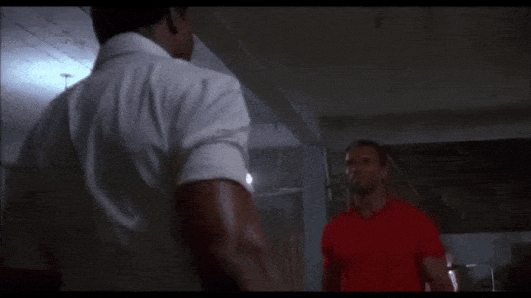
Just like they say a chain is only as strong as its weakest link, humans are only as strong as their grip strength allows them to be. The stronger your grip, the stronger your body will be.
A lot of times, on exercises like the Deadlift, your weak point isn’t your body it’s your grip! That’s why, when you’re trying to deadlift the most weight, using a mixed grip allows you to lift more weight instantly.
Try this the next time you Deadlift, work up to your heavy working set with a Double Overhand Grip. Perform 1 set 1 rep away from failure. Then, rest for 3-5 minutes, take a mixed grip on the barbell, and do it again.
Did you get more reps? I thought so!
The stronger your grip is the stronger your body will be. It’s almost as if your body isn’t using the maximum amount of strength it can due to your weak link, your grip.
The best way I’ve found to increase grip strength is to perform all of your Deadlifts, Rows, and other back work without using straps. Only use them for really hard sets when your grip is an issue. As long as you do this, you should build up your grip strength automatically.
I’ve been using a Double Overhand grip on Deadlift for years, and I’ve never missed a single lift because of grip strength!
#15 Abdominal Pressure For Maximal Strength & Stability
In this article, I went over how to use abdominal pressure for building strength in the Squat. The main thing this does is increase stability in your torso. The stronger you are through your abs and low back, the stronger you’ll be as a unit.
Most of the strength gains you’ll attain are from having a rigid core to transfer as much strength into the Barbell as possible. To do this, take a deep belly breath down into your stomach. Your goal is to fill up with as much air as possible and expand it out into your obliques and low back.
This rigidity will help you in the Squat, Deadlift, Overhead Press, and even your Bench Press. It will also keep you from getting injured and build much more strength over the long haul.
The next time you train, implement proper abdominal bracing and see just how powerful you feel!
#16 Use Dynamic Jumps & Throws In Your Training Program

Before each workout, you want to make sure you’re warming up properly! One of the main things I always recommend is incorporating jumps and throws. This is a great way to get the entire body ready for a heavy resistance training session.
The main things you want to make sure you do are:
- Don’t turn it into cardio. There’s a trend I’ve noticed recently that people seem to be buying into. Using jumps for cardio work. There are much better ways to condition your body without the increased risk of injury from landing a jump incorrectly. On top of that, the people doing this for cardio are in a fatigued state which further increases the risks involved. Don’t do this!
- Try to make every jump and throw as explosive as possible. Your goal with every jump and throw is to recruit as many muscle fibers as possible. You can’t half-ass a box jump, you have to squat down, use your arms, and explode every time! This preps your Central Nervous System for the workload you’re going to throw at it.
- Stick to small sets of 3-5 jumps or throws. Just like I said above, you don’t want to turn this into cardio. Smaller, more explosive sets of 3-5 jumps or throws are all you need. Be explosive and see just how much stronger you feel in your strength training workouts.
#17 Use Leg Drive When Benching
Bench Press is not just an upper-body movement, it’s a full-body one! You need to keep your intra-abdominal pressure throughout the lift, AND you need to push through your feet using leg drive!
For those that aren’t aware, leg drive involves pushing through your feet while bench pressing. This creates stability through the lower body on the bench and also assists in transferring the maximum amount of force to your upper body.
Think about getting set up on the bench, instead of just flopping down, try pushing your feet through the ground and “squatting the weight up”. If you do this, all of your Bench Press sets will be stronger and more stable!
Check out my guide on how much you should be able to bench press to see how you stack up!
#18 Wear A Belt On Heavy Sets
I’m sure a lot of you have seen others using lifting belts in the gym before. For some, it’s a fashion accessory, but for real lifters, it’s a necessary tool to get stronger.
The main issue I see is people wearing one for every set they do. You need to get rid of this mentality and only use it when you really need it, like on your work sets. For your warm-ups and assistance movements, it’s not necessary and will eventually become a crutch you can’t lift without.
To use a belt is very simple, put it on just tight enough to allow yourself to get a deep breath in push your abs, and low back out against it. This ensures you’re using the belt for what it’s really useful for, generating intra-abdominal pressure for maximum stability.
The absolute best belts in the world are made by Pioneer Fit. Some of the strongest lifters ever have all used Pioneer Fit belts and smashed world records. Definitely check them out, you won’t be disappointed.
Also for reference, here is some of the work that they do. They have a ton of custom designs that absolutely show just how great their craftsmanship is.
#19 Rest Longer In Between Sets
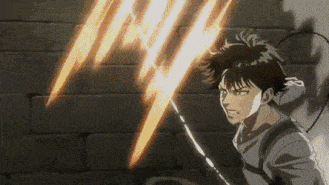
A lot of times I see people trying to get stronger and yet, they’re training with no rest. This doesn’t make much sense to me, if your goal is to get as strong as possible, the best way to do that is to rest appropriately.
For building strength, this means 3-5 minutes of rest at least. This gives your body enough time to replenish ATP (Adenosine Triphosphate), and creatine phosphate. These two molecules are necessary for building strength through the Phosphocreatine and Anaerobic energy systems.
The next time you’re focused on building strength exclusively, give yourself at least 3 minutes between sets. You should notice your rep quality and power output are much higher than normal by doing this!
#20 Wear Correct Footwear

In this article on how to build the squat, I went over just what types of shoes you should be wearing for strength training.
As explained in that article, you don’t want to be squatting or deadlifting in squishy running shoes. This prevents you from having a solid base of support and transferring the maximum amount of force into the ground.
So what should you be wearing?
Just like before I recommend two main things, either something simple such as Chuck Taylors/Converse or something more geared for squatting, Olympic lifting shoes such as Adidas Powerlift 4.
Using either of these types of shoes ensures your feet are flat on the ground, have a solid grippy sole, and give you the best stability.
Your other option is to go barefoot/wear socks, but it’s possible to slide on certain gym floors. When in doubt, use a flat sole, and you’re set.
#21 Use Chalk On Heavier Sets
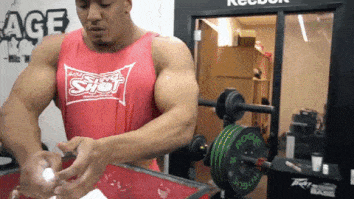
As I mentioned before in the section on grip strength, the stronger your grip is the more muscle fibers you can use and the stronger you’ll be. By using chalk, you evaporate all the moisture and oils on your hands, giving you an even firmer grip on the barbell.
I recommend only using this on heavier sets. I’ve never used chalk on a warm-up before, and I don’t think it’s really necessary.
The one thing to watch out for is the mess you make with it. Some gyms won’t even allow you to use chalk, which in that case, find a better gym. They don’t care about you being safe and getting stronger so find a gym that does.
The best part about lifting chalk is how cheap it is, as shown here on Amazon, you can get over a year’s supply for next to nothing. Make sure to start using chalk if you haven’t before. It’s super easy to use and gives you a safer grip to get stronger.
You can also use it on your upper back/traps for squatting to keep the bar locked onto your back!
#22 When Pressing, Keep Your Wrists & Forearms Straight
This one should be obvious but, when pressing, keeping your wrists and forearms straight allows you to apply much more force into the barbell. I’ve seen people that press with their wrists bent backward and all of that pressure is applied directly to the joint.
By keeping your joints stacked, you minimize shearing forces and decrease your risk of injury. As long as you squeeze the barbell at all times, your wrists should automatically lock into place.
No limp wristing the Barbell!
#23 Incorporate Over-Warmups
For those that have never heard of them, over-warmups are where you lift a weight that is higher than your work sets for the day. You don’t want to do an all-out set however, 1-3 reps are all you need to get the desired effect.
The way this works is simple, by lifting a heavier weight than what you’re planning on using, it “primes” your Central Nervous System to fire much harder than normal.
Then, when you back the weight off, it feels much easier and allows you to lift more reps at heavier weights.
Here’s how this might look, our work sets are going to be 3 sets of 3-6 reps @300 lbs.
Bench Press
- 150×10
- 180×5
- 210×5
- 240×3
- 270×3
- 300×1
- 330×1
- 3×3-6@300
We start at 50% of our work set and slowly increase by 10% jumps. Once we get to our work set of 300 lbs, we do a single, increase the weight another 10% to 330 and do our 1 rep over-warm up.
Once this is done, we back the weight off to 300 again and do our work sets for the day.
This primes your central nervous system and allows you to do more reps at a heavier weight. Try this out the next time you train! You should notice an immediate improvement!
#24 Ditch Pyramid Training
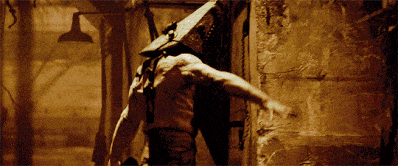
I’ve seen this style of resistance training performed by many people and recommended on various forums, magazines, and in person.
Pyramid Training is an easy-to-follow setup for programming your exercises.
That doesn’t mean it’s very effective for strength training, however!
Pyramid training looks something like this:
Squat
- 135×15
- 185×12
- 205×10
- 225×8
- 245×6
- 265×4
This looks super simple and that’s probably the one positive thing I can say about it. The major problem with pyramid training is the number of reps you’re doing before you get to your heavy sets. Doing excessive reps for warm ups can and will compromise your heavier sets.
The higher the intensity you can use, the easier you’ll be able to gain strength and build muscle! If you waste a bunch of energy on your warm-up sets, your overall intensity will go down in the gym.
Instead, try something as I displayed above!
Squat
- 150×10
- 180×5
- 210×3
- 240×2
- 270×1
- 3×3-6@300
This is all you need for a proper warm-up! If you require more than this to get warmed up, do some higher rep sets with just the barbell.
Completing your warm-ups in this fashion allows you to push the warm-up sets with more force, save energy, and use more weight on your work sets.
I’ve attempted pyramid training before, and it always felt lacking. I felt like I could have done more weight if I didn’t waste as much energy on the warm-ups that aren’t intense enough to build much muscle or strength anyway.
Try out the warm-up I’ve shown above and see if you get better results saving your energy for what really matters, your work sets!
#25 Try Out Unilateral Exercises
When training the body to be as strong as possible, having weaker muscle groups that are imbalanced is never a good thing. If one arm or leg is stronger than the other, you’re never going to reach your full potential!
How can we correct these imbalances to make sure we’re stronger overall?
Incorporating unilateral exercises of course!
Unilateral exercises are those that only use one limb at a time. Examples are Dumbbell Rows, Lunges, Pistol Squats, Dumbbells Presses, and many more!
By using these exercises, you can work on each limb separately to balance out your strength and stay injury-free!
The best way to complete these exercises correctly is by training the weaker side first and then moving on to the other side. Say you’re doing Dumbbell Rows, I have my clients start with their weaker arm first, and do the required reps. From here, I make them do the other arm for the SAME number of reps.
If they do more on the stronger side, it just further complicates the problem. Muscle and strength imbalances in the limbs affect every movement you do which can lead to injuries down the line.
Make sure to use some unilateral exercises in your resistance training sessions to get stronger and lift safely!
Conclusion
Now I turn it over to you!
What tips from this list did you find the most helpful for your own training?
Let me know in the comment section below, right now!
Until next time,
-Dante